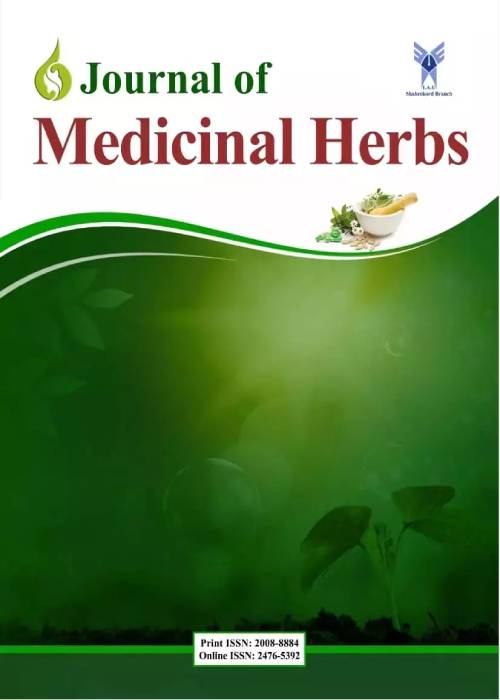Identification and application of anthocyanine from wild safflower (Carthamus oxyacanthus) seed coat color
Author(s):
Abstract:
Background and Aim
Despite valuable medicinal properties of safflower، breeding new varieties and development of the crop culture area has been limited due to the lack of genetic variation for some crucial characteristics as resistance to diseases and pests like safflower fly. In this study، populations of wild safflower، C. oxyacanthus were collected from western، central and southern regions of Iran to investigate their genetic variation for resistance to safflower fly، Acanthiophilus helianthi. Then mechanisms of plant resistance to safflower fly and effective bio-chemical compounds involved in the resistance were also investigated. Experimental: Germplasm collection of wild safflower، C. oxyacanthus، was carried out from central، southern and western Iran including provinces Fars، Kohgiluyeh، Isfahan، Chaharmahal va Bakhtiari، Markazi، Tehran، Lorestan، Kordestan، Ilam، Kermanshah and Hamadan. In each province، 3 to 5 samples were gathered from collection sites 50-100 km apart from each other. Each accession was composed of seeds from 30 to 50 individual plants in each collection site. Accessions were planted and evaluated in a randomized complete block design with 3 replications for resistance to safflower fly (Acanthiophilus helianthi) in terms of dead larvae frequency. Results and Discussion
Fresh brown-black and white seed coats from immature seeds of C. oxyacanthus were soaked for 48 h in DMF in three replications. The extracted solution was chromatographed on TLC. The compounds isolated by chromatography were dissolved in 1 mL of DMSO-d6 and 1D proton nuclear magnetic resonance (H-NMR) and carbon nuclear resonance (C-NMR) spectra were recorded. The results showed that brown-black seed coat color in C. oxyacanthus is due to the presence in high concentration of a main anthocyanidin. The compound in the seed coats predominantly undergoes polymerization due to desiccation and exposition to atmosphere during ripening and performs as indigestible and anti-nutritional polymers against fly larvae feeding. Industrial and practical recommendations: Safflower varieties with black seeds containing high amount of anthocyanidin may help to overcome or alleviate insects and diseases problems in front of developing safflower production area and to extract novel metabolites for medicinal purposes.Language:
Persian
Published:
Journal of Medicinal Herbs, Volume:2 Issue: 1, 2011
Page:
1
magiran.com/p971431
دانلود و مطالعه متن این مقاله با یکی از روشهای زیر امکان پذیر است:
اشتراک شخصی
با عضویت و پرداخت آنلاین حق اشتراک یکساله به مبلغ 1,390,000ريال میتوانید 70 عنوان مطلب دانلود کنید!
اشتراک سازمانی
به کتابخانه دانشگاه یا محل کار خود پیشنهاد کنید تا اشتراک سازمانی این پایگاه را برای دسترسی نامحدود همه کاربران به متن مطالب تهیه نمایند!
توجه!
- حق عضویت دریافتی صرف حمایت از نشریات عضو و نگهداری، تکمیل و توسعه مگیران میشود.
- پرداخت حق اشتراک و دانلود مقالات اجازه بازنشر آن در سایر رسانههای چاپی و دیجیتال را به کاربر نمیدهد.
In order to view content subscription is required
Personal subscription
Subscribe magiran.com for 70 € euros via PayPal and download 70 articles during a year.
Organization subscription
Please contact us to subscribe your university or library for unlimited access!


